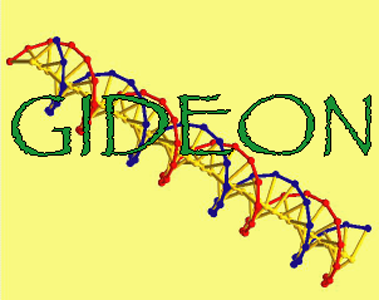|
|
The Graphical Integrated Development Environment for OligoNucleotides
We
are proud to annouce the release
of GIDEON,
the first software package which specifically addresses the needs of
the SDN (Structural DNA Nanotechnology) research
community and industry. GIDEON is a
3-D modeling and simulation tool for creating and testing
SDN models within a virtual environment. Computer modeling using
a
graphical user interface (GUI) overcomes the limited precision and
practicality of physical models for larger systems, and the limited
interaction rate associated with earlier, command-line driven software.
If you would like more information
about GIDEON (especially getting a copy), then please send email to info@subirac.com.

Click the following pictures for a larger view.
|
|



